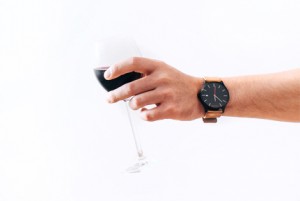Do You Know What To Do If Your Pug Eats Chocolate?
Chocolate is a tasty treat for humans that can be fatally toxic for pugs. It may be one of the most common forms of poisoning in dogs, so it’s vital to know what to do if it happens to your pug.
Kilo the Pug once stole and devoured a whole tray of dark chocolate and walnut brownies when we first fostered him. I rushed him to the vet and they induced vomiting and gave him a charcoal product. Thankfully he was fine. Then just last week, our house-guest Angus snuck a few bites of a block of dark chocolate he scavenged out of a backpack. Luckily for him, he threw up his breakfast and all the chocolate almost immediately (on the white carpet of course). We monitored him carefully for the next 2 days and he was fine.
What To Do If Your Pug Eats Chocolate
If you know your pug has consumed Chocolate, call your vet or the 24-hour ASPCA poison control hotline: 1(888) 426-4435. Some fees may apply if you get a full phone consult, but it may be worth it. They can better help you calculate the risk to your pup by taking important information like:
- What exactly did they eat? Was it dark chocolate? (That’s the most dangerous kind)
- How much did they consume?
- How long ago do you think they consumed it?
- How big is your pug? What do they weigh?
- Did they vomit?
What’s so bad about chocolate? It’s delicious!
Although you may be tempted at times, the unfortunate truth that sharing certain human foods with your pug can be seriously harmful to their health. Whether your pug took a bite of your brownie or stole an entire cake, it can be helpful to understand just what is happening and what to do.
See: 15 Foods You Should Never Feed Your Pug
Chocolate contains very toxic substances that are basically stimulants that can stop a pug’s metabolic process.
Toxins In Chocolate
Chocolate contains substances known as methylxanthines -specifically caffeine and theobromine. These Toxic substances are in all kinds of chocolate, with dark chocolate containing the most and white chocolate the least.

Symptoms of Chocolate Toxicity
- Upset Stomach
- Diarrhea
- Vomiting
In More Severe Cases
- Seizures
- Muscle Tremors
- Internal Bleeding
- Irregular heart beat
- Heart Attacks
- Death
If your pug is showing any of these symptoms, then see your vet as soon as possible.
It’s also possible that if your pug has eaten chocolate they will naturally vomit on their own shortly after. Generally, within the first couple hours after consumption, if your pug hasn’t puked, the vet will need to induce vomiting. So it is crucial to get in to see your vet as soon as you realize your pug is at risk.
And again calling the 24 hour ASPCA hotline can help you calculate that risk quickly.
Nobody plans for these sorts of things to happen, but whether it’s the middle of the night and your vet is closed or not, the reality is that they do. Keeping a clear head and taking immediate action can save your pug’s life.
Safe ‘Chocolate’ For Pugs!?
While researching for the Dog Licks Dog-Friendly Recipes, we looked for a Dog-Friendly Substitute for Chocolate and found Carob. You’ll be impressed with the benefits for dogs and humans. In fact, all of the ‘chocolate’ photos in this post are actually Carob!
Carob is a chocolate substitute that can be ground into powder, melted or made into chips, just like chocolate. It has a similar rich dark brown color and naturally sweet flavor. It does not contain stimulants like caffeine, phenylethylamine or formamide, making it a great potential substitute for humans too.












